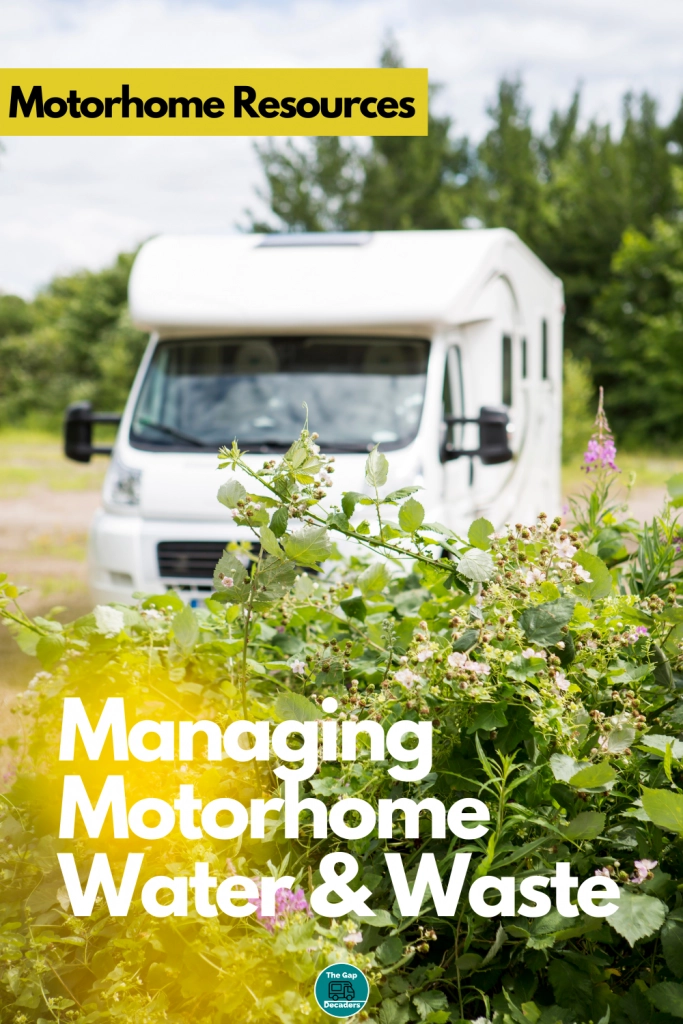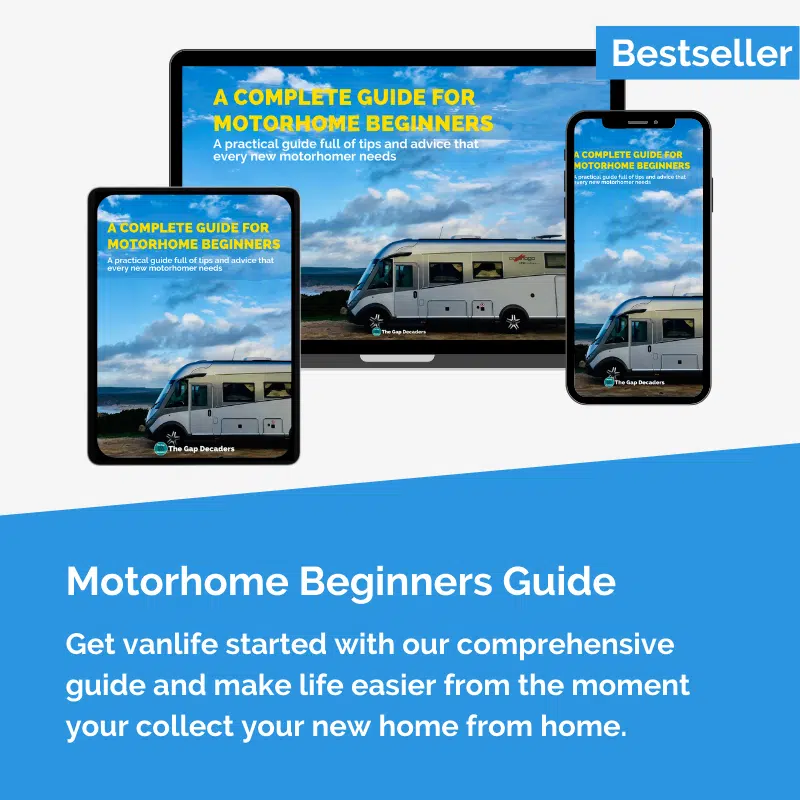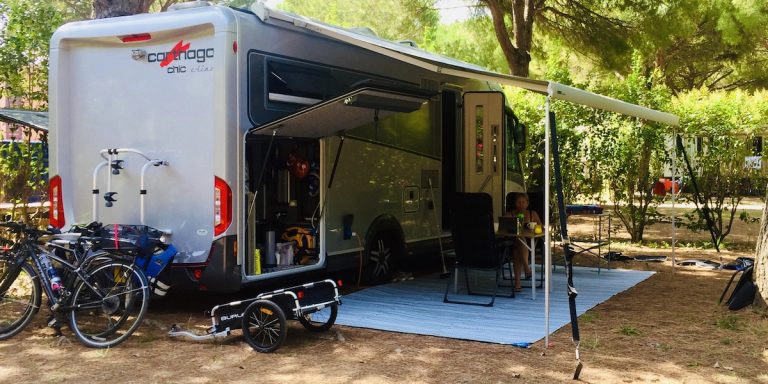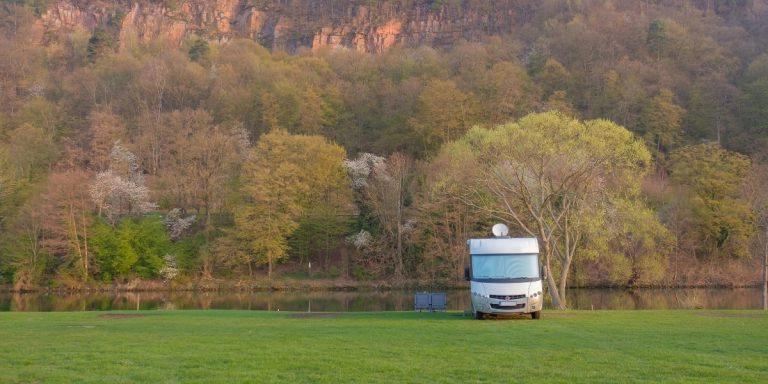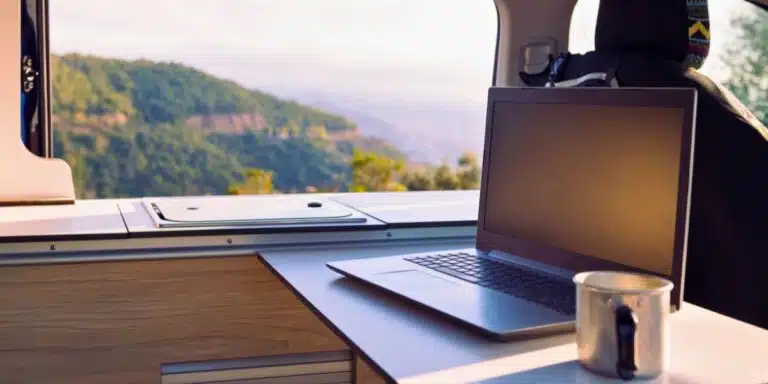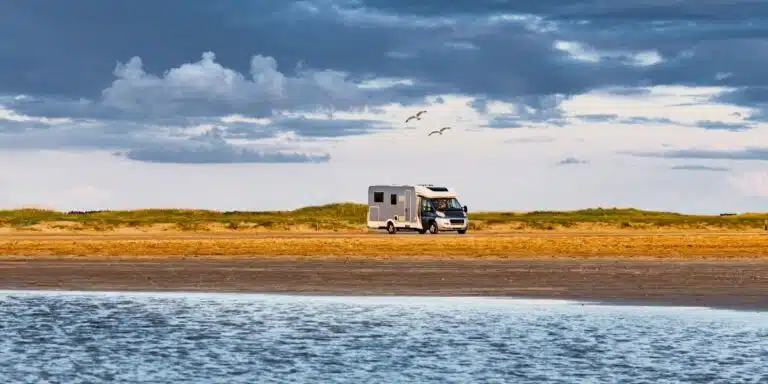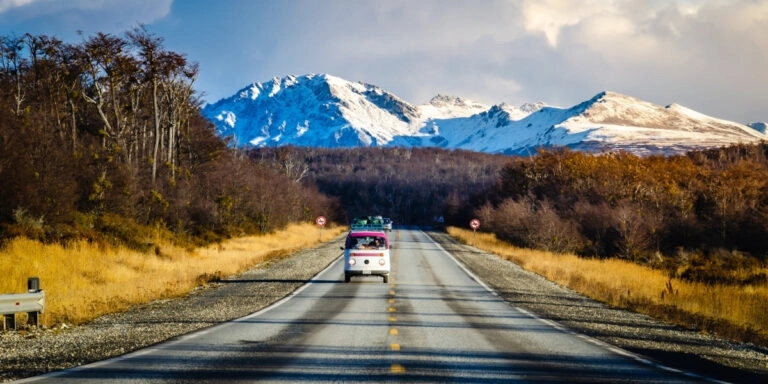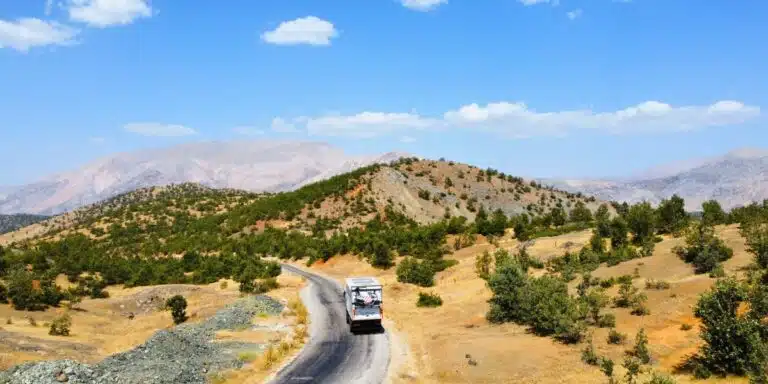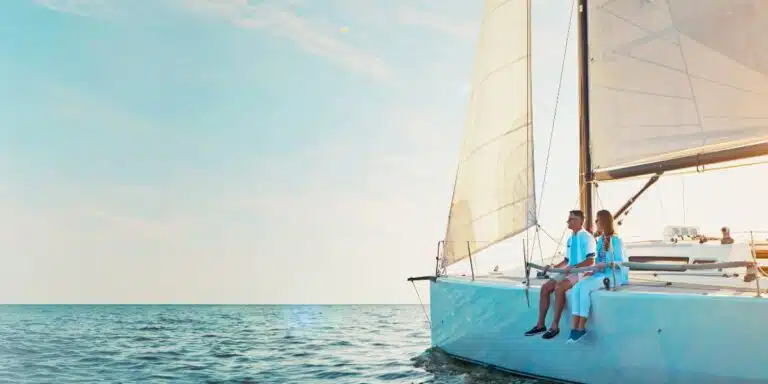This post may contain affiliate links, from which we earn an income. Click here to read our affiliate policy.
Managing your Motorhome Waste & Water
In a motorhome, there’s no plumbing to take everything away, or fill everything up again. Your motorhome waste and water has to be managed on an almost daily basis.
This easy guide to motorhome waste and water systems explains everything you need to know.
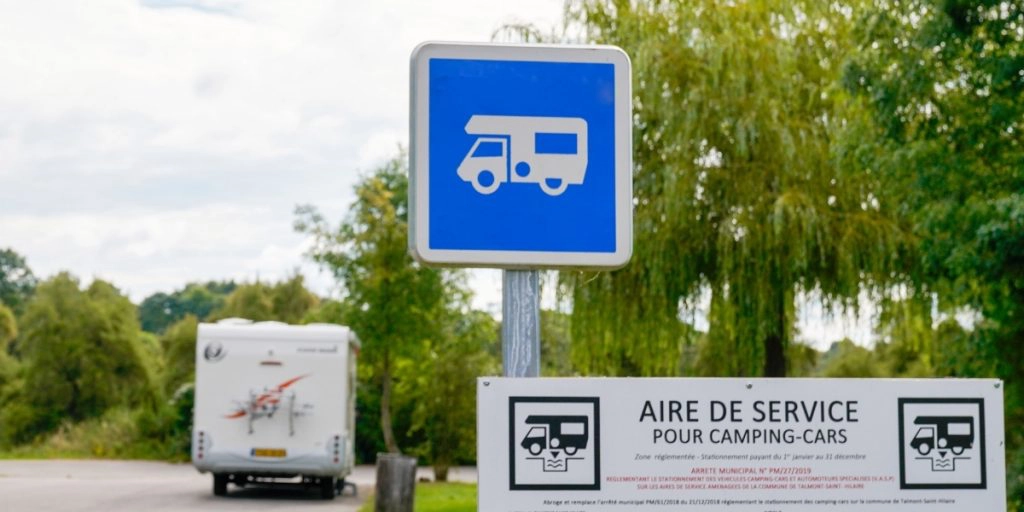
How Do Motorhome Water Systems Work?
The water systems fitted into a motorhome and campervan usually consist of a fresh water tank, a 12v electric pump and hoses which take the water to various outlets in the motorhome.
These includes a gas water boiler (Alde and Truma are popular makes), shower, taps in the kitchen and bathroom, toilet (unless you have a composting dry toilet) and maybe an external shower head.
You may have a submersible pump which sits in the fresh water tank, or an inline pump which is sited outside your tank. If you can hear the pump when you run the water, the chances are it’s inline.
Your taps and outlets may be fitted with micro-switches which send a signal via the 12v wiring to your pump, to tell it to supply water to the tap or outlet.
If you don’t have micro-switches fitted (which is what most motorhome taps and outlets tend to have), you’ll have a pressure switch which works with your pump whenever an outlet is opened.
The benefit of the latter is that you can have everyday household taps and not be limited the the plastic motorhome taps which break easily.
All the waste from these outlets drains into a grey water tank which is usually underneath the floor of the motorhome.
Fresh Water
When you have a limited amount of fresh water in your motorhome tank, and you need to shower, brush teeth, flush the loo, cook, wash up, clean your van, make tea, drink and do all the things society generally takes for granted, you realise very quickly just how much you use every time your turn on the taps.
Not only does your fresh water come out of the taps and shower, it also feeds your water heater and provides your toilet flush, either directly from the tank or via a cistern.
The average adult in the UK uses 110 litres of water a day. The average motorhome onboard water tank is around 100 litres. It doesn’t take a genius to work out that you’ll either be filling up a LOT, or working out how to conserve your fresh water.
It is also important to be mindful of not only using your onboard tank water wisely, but that of the country which is hosting you. Many parts of southern Europe suffer from acute water shortage, and although fresh water is always available, it takes a lot of work and effort to make it so. This should be respected.
Managing your water consumption when you travel not only means you have to fill less often, it also means you’re using less power as you’re not running your water pump or boiler to heat water. Being less wasteful if also better for the environment.
Ways to Conserve Fresh Water
Filling Up Your Tank
It is relatively easy to fill up, especially in Europe where you’ll find an aire with fresh water in most locations, otherwise check into a campsite and use their facilities, or look for the dump station signs at garages and supermarkets.
Sometimes the water supply is free, the most we have ever paid to fill our tank in Europe is €2.
You can monitor your water usage using the indicator on your motorhomes control panel. Use Park4Night to identify motorhome service points with fresh water when you’re getting low.
Filling a Motorhome Water Tank at the Aire or Service Point
Only use potable (drinkable) water when you fill your motorhome fresh water tank. Even if you don’t intend to drink this water (we advise you don’t unless filtered), non-potable water can contain bacteria which may sit in your tank and contaminate any potable water you later fill up with. There is usually a sign by the water tap to tell you whether it’s potable.
Check the arrangements where you fill your tank, sometimes the water hose provided (where there is one) may also be the hose used to flush the toilet emptying point and clean out cassettes …you don’t want poo in your clean water!
Even if there is a separate hose, we have often found it left on the floor, lying in water which may or may not be dirty.
If in doubt, use your own roll-flat food grade hose, like this one, or if you really have too, use an anti-bacterial wet wipe to clean the end of the hose and tap (although I am pulling a face whilst writing that!).
You’ll need a variety of connectors – we carry six – it doesn’t seem to be country dependent either. The worst ones are push taps without a thread, which make it almost impossible to attach a hose, which is where a watering can or water carrier come in handy.
You can usually get the correct connectors in DIY stores wherever you are and there are universal connectors on the market, but we haven’t tried them.
Filling At the Campsite
If you’re on a fully serviced pitch with fresh water, you can fill easily whenever you need to with a hose pipe.
We recommend carrying at least a 30m pipe so you can also access water near to, but not on, your pitch.
If the site has one service point and no water on or near the pitches, then you either have to drive the motorhome there when you need water, or use a manual collection method.
Many people carry a large watering can for this purpose or you can buy a water carrier with a spout like this one, which makes it easier to actually get the water into your tank!
You may see the odd touring caravan or trailer with a holding barrel by the fresh water inlet, filling from a tap and pumping into the van. Motorhome water tanks don’t work in the same way as caravan water tanks and this system is not usually or easily possible with a motorhome.
The Complete Guide for Motorhome Beginners
With our best motorhome tips and advice about motorhome basics to where to park for the night and ideas for touring Europe, this is the ultimate resource for motorhome newbies.
This motorhoming ebook will help you get to grips with the inner workings of your motorhome, giving you confidence for life on the road and your first motorhome adventure!
Water Management Tips
Follow these tips when managing your fresh water:
RELATED POST: Motorhoming Tips for Beginners: Essential Know How for Motorhome Life
Motorhome Grey Waste
Sometimes called grey water, this term refers to all your used water other than toilet waste, so anything from your washing up bowl to your shower water.
Emptying Your Motorhome Waste Water Tank
Most motorhomes water system designs mean the grey water tank is slightly smaller than their fresh water tank. This is because not all the fresh water you use goes into your waste tank. It may be drunk, consumed or used in your toilet flush.
Some motorhomes will have an indicator on the control panel to let you know how full your waste tank is. It makes sense to empty when you fill up, which is why motorhome service points are so handy.
Most motorhome waste disposal points consist of a drive over area with a large grating – in some the grating may stretch the width of the area which will have a slight fall built in, to ensure your waste drains away. Others have just a hole which you should try and position your waste outlet over.
Once you’re in position, open your waste tank valve slowly (you’ll find where it is in your motorhome manual) until the flow starts. Avoid opening all the way, you WILL get spalshed. Once the flow has started, you can open the level the full way.
Once your tank is empty, wash down the area with fresh water and the hose (usually) provided so it’s clean for the next person.
RELATED POST: Motorhome Glossary – A-Z of Terms & What They Mean
Managing Grey Waste on Site
Fully serviced pitches may have a motorhome waste water disposal point. It will be a soil pipe with a cap on, usually hidden away in a cornet somewhere. Remove the cap and feed a hose from your outlet pipe into the soil pipe and open the waste valve lever to empty.
We have found that often these points don’t work well or have not been designed correctly, in that they are higher than the rest of the pitch and so your grey waste water sits in the pipe.
Depending on your motorhomes outlet pipe arrangements, you may need a bit of jiggery-pokery and a specific length of hose or waste water pipe to make this work. We use the Colapz Flexi Waste Pipe Kit when on a fully serviced pitch.
The other method is to leave your waste valve open and position a bucket under your outlet pipe and dispose of the waste manually on a regular basis.
Do not dispose of this waste on your pitch unless it is into the soil pipe, take it to the correct grey waste point. How often you need to do this depends on whether you choose to wash-up and shower in your motorhome or use site facilities.
Combined Black and Grey Waste Tanks
Combined black and grey waste tanks (common in RV’s, overland vehicles and some van conversions) cannot be emptied in the normal European and UK grey waste facilities, which are designed to cater for grey waste only.
Because of the faecal matter in combined grey and black waste water, you will need to find a specialist black water waste disposal point which has a drive over all in one waste disposal point. These can sometimes be found in marinas or boat yards, or you could find a manhole which goes directly into a sewer and empty your black water tank into that – just make sure it’s not a storm drain.
RELATED POST: On-the-Go Convenience: An Easy Motorhome Toilets Guide
Recommended Reading
How to Take Your First Motorhome Trip (& have an amazing time!)
Help …My Camper Smells Bad
Grey Waste Tank Smells
Any chemical product you use from washing up liquid, to toothpaste and shower gel ends up in your waste pipe and grey waste holding tank with the waste water. After a while, it starts to break down into the not so nice components it is made up from and boy, does it stink!
It is particularly noticeable if there is access to your grey waste tank from inside your van. When you have been parked up for a while and then disturb the water when you move; driving along smelling like rotten eggs is one of the unpleasant parts of life on the road.
The chemicals stick to the insides of your tank and continue to deteriorate and even if you use one of the many treatments available, it only masks the issue. There are some preventative measures you can take:
The only way to deal with this properly is to periodically clean your grey waste holding tanks. This is a grotty and smelly job but we always feel better afterwards, knowing we are ‘clean’ for a while.
The best way to manage this is to empty your motorhome waste tank, access a hose with good pressure and literally get your arm as far into your waste tank as possible giving the hose a good spray around. You could use a jet washer but it’s not advisable if access to your waste tank is inside the van.
Let this water drain then fill the waste tank to around 20% and add some heavy duty tank cleaner before driving along some mountainous and bendy roads to your next destination, so the whole lot sloshes around before being emptied on arrival. Then, add this tank freshener to your holding tank regularly, this keeps the worst at bay until your next big clean.
Are you looking for more motorhome travel tips and advice? Check out these top posts…
Working Whilst Traveling in Your Van
Keep Your Motorhome Safe with Moving Intelligence UK
Must-Have Storage Ideas for Your Home on Wheels
Must-Have Mobility Aids for a Comfortable Motorhome Journey
MOT for Long-Term Travel Outside the UK: All You Need to Know
Reinvent Your Life: The Ultimate Gap Year Guide for Over 50s
Love it? Pin it!
